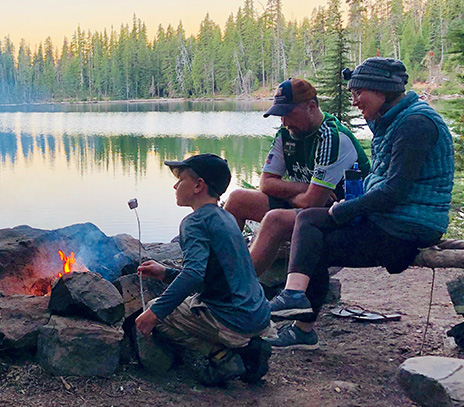
Summer Activities and COVID-19
June 10, 2020
JUNE 10, 2020: Many of us are wondering, now that summer is here, what activities can we safely participate in? Can we venture out to enjoy the season with family and friends?
Don’t focus on all the summer activities that have been canceled or put on the unsafe list—instead, think about the positive, and all the wonderful things you can still do at home or while social distancing this summer.
A basic rule of thumb is that activities with fewer people in larger places have a lower risk of spreading the COVID-19 virus. Think of transmission risk with a simple phrase: time, space, people, place.
Always choose outdoors over indoor, always choose masking over not masking and always choose more space for fewer people over a smaller space.
Personal risk depends on age and health. Also, the prevalence of the virus in your area may restrict activities, so check your local laws.
AIR TRAVEL
Overall risk: High. Airlines are social distancing by limiting the number of passengers on flights and keeping middle seats empty. You’ll still be sitting close to lots of other people in a small space for a long period of time. Wear a mask and disinfect all hard surfaces in your seating area with antibacterial wipes. Road trips offer a lower risk. Cars contain small groups of people that likely know each other.
HOTELS
Overall risk: Medium. It’s hard to know who stayed in your room before you and how thoroughly it was cleaned before you checked in. Air out the room when you arrive, either by opening a window or running the AC system. Pack some antibacterial wipes to disinfect high-touch surfaces such as doorknobs, lighting control, faucet handles, the TV remote, etc.
DINING
Overall risk: Eating indoors at a restaurant: medium to high risk. If you go to a restaurant, look for outdoor seating. Dining outside al fresco is ok. Natural open air is best and it’s easier to maintain social distancing from other diners.
YOUTH SPORTS
Overall risk: Medium to High. Full or close contact sports like football, baseball, soccer and basketball have a higher risk of transmitting the virus. Sports like golf and tennis are safer, because there is limited contact and athletes are often feet or yards apart from each other.
OUTDOOR ACTIVITIES
Overall Risk: Low. Biking, walking, and hiking are relatively low-risk activities. It’s easier to control your surroundings while in nature, and wide-open spaces can naturally limit your interactions with others.
FAMILY GATHERINGS
Overall Risk: Depends. A picnic with your family is one thing. Weddings, graduation parties and family reunions are another. The longer the guest list, the higher the risk. Schedule visits from smaller groups of family throughout the summer.
A BYOB BACKYARD
Overall Risk: Gathering with one other household: low to medium risk. If you have a gathering with one other household that has followed social distancing, this would be a low-risk activity. To lower risk, avoid sharing food, drinks or utensils — make it a BYO-everything party. Food itself isn't the risk, but touching shared dishes or utensils could be.
BEACHES
Overall risk: Low. Water itself is not a risk. The sheer volume of water will dilute out the virus, making the water a highly unlikely source of infection. Ensure that you can stay 6 feet from anyone outside of your designated family. A beach is better than a pool in terms of space. Go early in the morning or late afternoon, when crowds are lower, and look for beaches that mark off spots for people to set up their areas.
CAMPING
Overall Risk: Low. You're outdoors and isolated. If you're going with a group, be sure you can trust your fellow campers. Have they been social distancing and following the guidelines?
MOVIE THEATERS
Overall risk: Medium. Even with occupancy caps, remote ticketing and policies that keep two empty seats between household groups, watching a movie puts you close to a large number of strangers for two hours or more. Wear a mask. Try to sit as far away from others as possible.
WATER PARKS
Overall risk: Medium. The chlorinated water in a water park should eliminate the possibility of virus transmission. Still, these parks tend to be crazy busy, usually with lots of little ones with no sense of social distancing, especially in the heat of summer.
